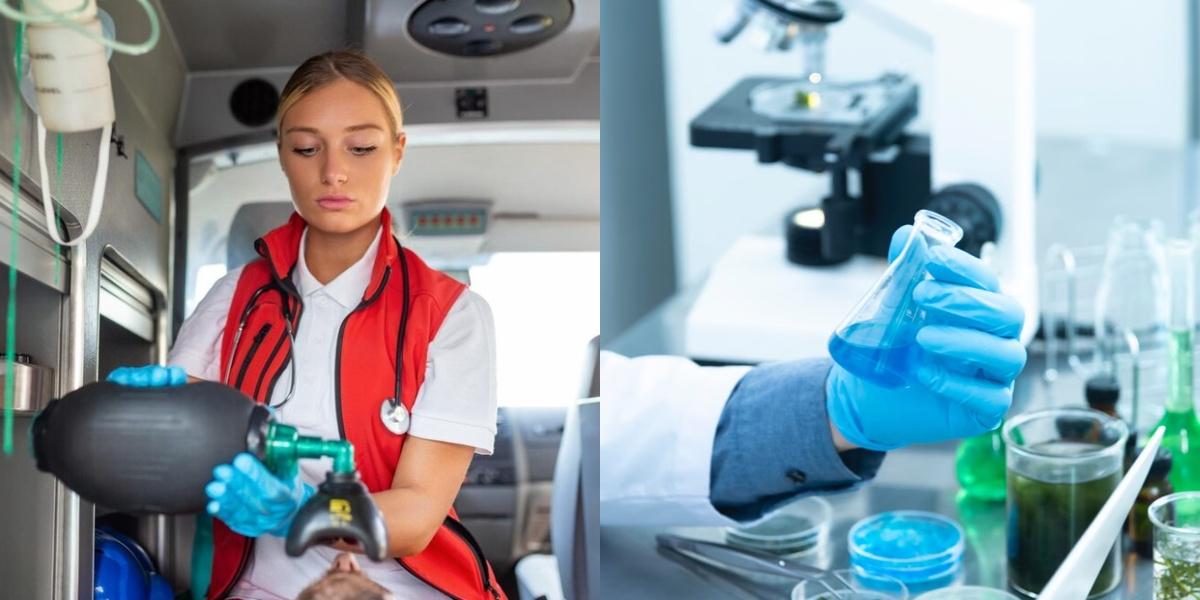Emergency Medical Technician vs Sterile Processing Technician

Key Points:
- EMTs provide emergency medical care; Sterile Processing Technicians ensure medical equipment is properly sterilized.
- EMTs typically earn more than Sterile Processing Technicians, with the median annual salary for EMTs being higher.
- Both EMTs and Sterile Processing Technicians are in demand.
- EMT training is typically done in-person, while Sterile Processing Technician training can be done online or in-person.
- EMT training is generally more intensive and costly, with a shorter duration compared to Sterile Processing Technician training.
In the field of healthcare, there are numerous career paths to choose from. Two popular options are becoming an Emergency Medical Technician (EMT) or a Sterile Processing Technician. While both careers involve working in a healthcare setting, they have distinct differences in job duties, education requirements, and career outlook. In this blog post, we will explore the key differences between these two professions, helping you make an informed decision about which path is right for you.
Emergency Medical Technician vs Sterile Processing Technician: Education and Training
The education and training required for becoming an Emergency Medical Technician or a Sterile Processing Technician differ as well. Here are the general requirements for each profession:
Emergency Medical Technician (EMT):
- EMT-Basic: Requires completion of a state-approved EMT-Basic training program, which typically takes around 6 months to complete. EMT-Basics are trained in basic life support skills, such as CPR and wound care.
- EMT-Intermediate: Requires completion of an EMT-Intermediate training program, which builds upon the skills learned in the EMT-Basic program. EMT-Intermediates can administer medications, perform more advanced medical procedures, and provide additional patient care.
- EMT-Paramedic: Requires completion of a paramedic training program, which typically takes 1-2 years to complete. Paramedics have the highest level of EMT training and can provide advanced life support, administer medications, and perform complex medical procedures.
Sterile Processing Technician:
- High school diploma or equivalent
- Completion of a sterile processing technician training program, which can range from a few weeks to several months. These programs cover topics such as infection control, sterilization techniques, and proper handling of medical instruments.
- Some employers may require certification as a Certified Registered Central Service Technician (CRCST) through a professional organization such as the International Association of Healthcare Central Service Material Management (IAHCSMM).
Emergency Medical Technician vs Sterile Processing Technician: Career Outlook and Salary
The career outlook and salary potential for Emergency Medical Technicians and Sterile Processing Technicians also differ. Here is an overview of each:
Emergency Medical Technician (EMT):
- According to the Bureau of Labor Statistics (BLS), the employment of EMTs is projected to grow 6 percent from 2019 to 2029, which is faster than the average for all occupations.
- The median annual wage for EMTs was $36,650 in May 2020, with the highest 10 percent earning more than $61,830.
Sterile Processing Technician:
- The BLS does not provide specific data for Sterile Processing Technicians, but they are part of the larger category of Medical Equipment Preparers.
- Employment of Medical Equipment Preparers is projected to grow 7 percent from 2019 to 2029, which is faster than the average for all occupations.
- The median annual wage for Medical Equipment Preparers was $38,550 in May 2020, with the highest 10 percent earning more than $61,180.
Final Thoughts
Choosing a career in healthcare is a significant decision, and it's important to carefully consider your interests, skills, and goals. Both Emergency Medical Technicians and Sterile Processing Technicians play vital roles in the healthcare system, but they have distinct job duties and requirements. If you enjoy providing immediate medical care in high-pressure situations, becoming an EMT may be the right path for you. On the other hand, if you prefer working behind the scenes to ensure the safety and sterility of medical instruments, a career as a Sterile Processing Technician may be a better fit. Take the time to research and explore both options, and consider reaching out to professionals in the field for further insights. Good luck on your career journey!
Dreambound's educational programs are conveniently available in diverse locations, ensuring accessibility for aspiring individuals. For a more comprehensive understanding of the exciting opportunities within the realms of these two vocations, we invite you to explore further details by visiting:




